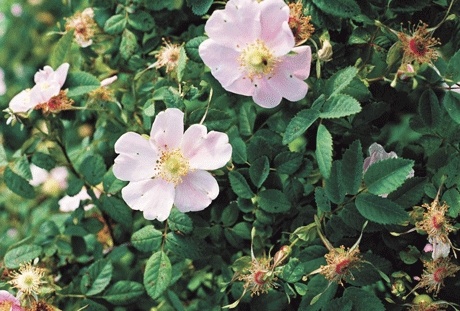The nondescript bushes are overlooked 11 months of the year on Whidbey Island, but in June the flowers pop out and suddenly we’re decorated with wild roses.
There are several varieties, with the Nootka rose being dominant on Whidbey. And they’re hardly scarce, lining almost every roadside, trail and fence line that’s exposed to the sun. But their abundance makes them no less treasured by the people who know them.
“I love these things, this is what life is all about,” said Melissa Duffy, a naturalist educator who lives in Oak Harbor, where she helped save the post off Garry oak and oversees the native plant garden beneath the beloved tree.
Well versed in the lore of native plants, Duffy can reel off many uses for the wild rose, some popularized by Native Americans before European settlers arrived.
“They’re edible and they’re beautiful,” Duffy said. Natives used the branches to line storage pits and to lay over fire pits and around food so it wouldn’t scorch.
In the spring, the new shoots are edible. The best known edible parts are the rose hips, the area where the petals were located after they fall off.
“This is where the seeds are stored and it is a bright red in color,” Duffy said. “In the fall after the first frost these become sweeter and the contain Vitamin C and are good to eat.”
The rose hips can also be made into tasty jam and jelly, as well as various beauty and health products. “Rose hips prevent the runs,” Duffy said.
For eager rose nibblers, there’s no need to wait until fall. You can eat the flowers now. They taste as they smell, like a delicate natural rose. They’re known to be calming when sprinkled in the bath water.
This year’s flowers are fading fast, but it’s not to late to take some time to smell the roses.
“They’re relaxing, calming and good four the soul, and it’s free,” Duffy said.



